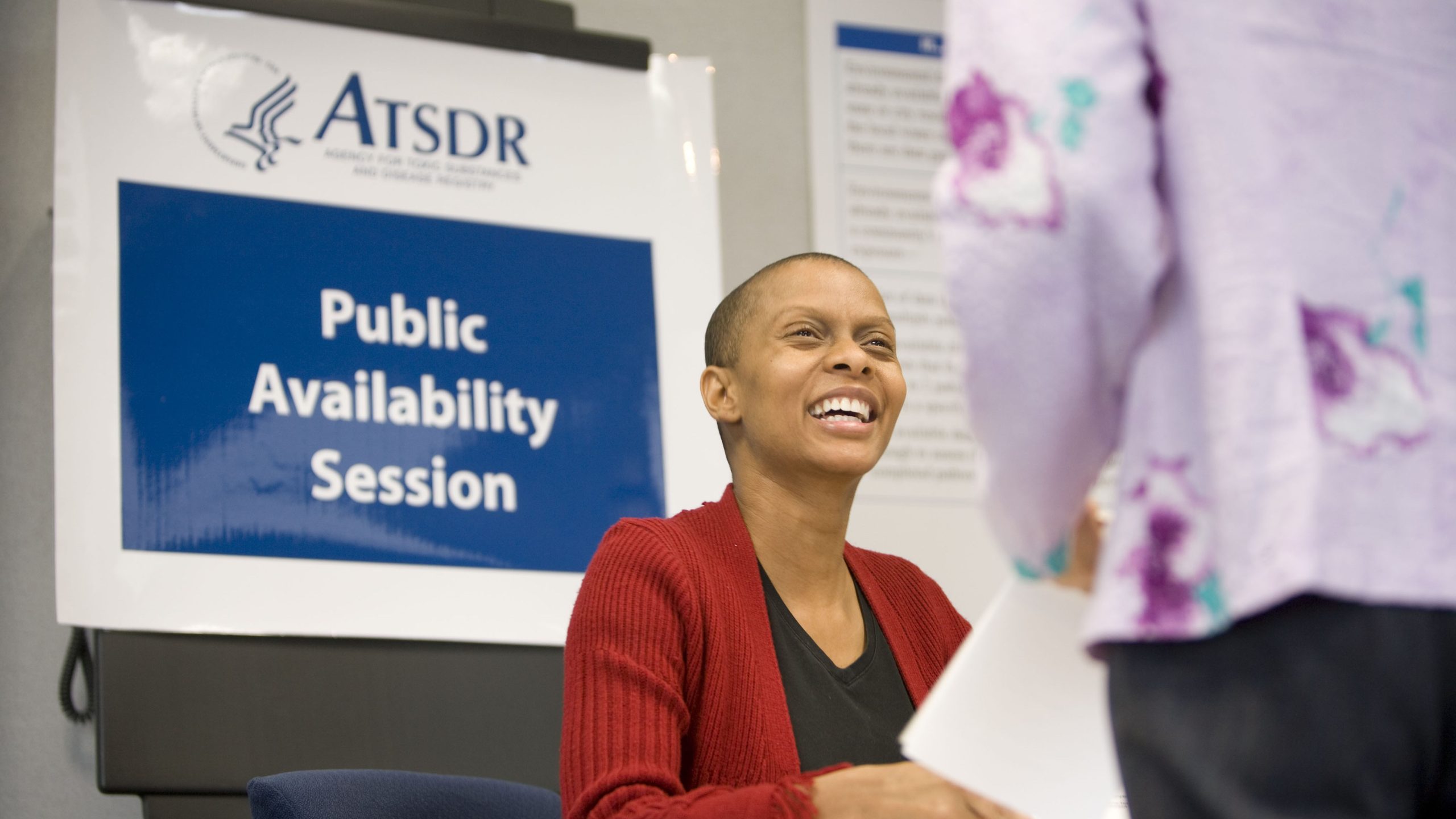At a glance
In Module 1, you will learn about ATSDR's role as a public health agency and its mission. Additionally, you will be introduced to the public health assessment (PHA) process, which is ATSDR's effective method for assessing the health effects on communities exposed to hazardous substances at contaminated sites.
Training overview

Training objectives
After completing Module 1, you will be able to:
- Name the responsibilities of ATSDR to protect the public from hazardous exposures.
- Identify the components of ATSDR's method, known as the PHA process.
- Recognize criteria considered in the evaluation of petition requests.
- Distinguish the types of documents that you might develop to summarize the findings and recommendations of the health assessment.
- List public health recommendations that can be made as a result of the PHA.
- Explain the benefits of environmental health professionals working with the Environmental Protection Agency (EPA) to protect communities' health.
Target audience
Public health professionals involved or interested in the PHA process, including:
- Environmental Health Specialists, Toxicologists, and Epidemiologists
- Community Involvement Specialists, Health Communicators, and Health Educators
- Medical Officers and Registered Nurses
- Program Managers
Continuing education units
Instructions for Obtaining Continuing Education (CE)
To receive CE for Public Health Assessment Training Module 1: About ATSDR and Its Method, please visit CDC TRAIN and search for the course in the Course Catalog using WB4811. Follow the steps below by April 9, 2026.
- Register for and complete the course.
- Pass the post-assessment at 75%.
- Complete the evaluation.
- Visit Your Learning to access your certificates and transcript.
Prerequisites
There are no prerequisites to complete Module 1.
Faculty/Credentials
- Sylvia Allen-Lewis MA BA, Health Education Specialist, Agency for Toxic Substances and Disease Registry
- Sandra M. López-Carreras MS BS, Health Scientist, Agency for Toxic Substances and Disease Registry
- Karen Scruton BS MS, Environmental Health Scientist, Agency for Toxic Substances and Disease Registry
- Gregory (Greg) M. Zarus MS MS BS BS, Director of Office of Innovation and Analytics, Agency for Toxic Substances and Disease Registry
Content Experts
This course was developed by ATSDR, Office of Capacity Development and Applied Prevention Science, in collaboration with:
ATSDR's Office of Community Health and Hazard Assessment
Eastern Research Group, Inc.
Tetra Tech, Inc.
National Center for Environmental Health/Agency for Toxic Substances and Disease Registry Office of Communications
CDC Create-IT Services
Accreditation Statements
CEU: The Centers for Disease Control and Prevention is authorized by IACET to offer 0.1 CEU's for this program.
CECH: Sponsored by the Centers for Disease Control and Prevention, a designated provider of continuing education contact hours (CECH) in health education by the National Commission for Health Education Credentialing, Inc. This program is designated for Certified Health Education Specialists (CHES®) and/or Master Certified Health Education Specialists (MCHES®) to receive up to 1.0 total Category I continuing education contact hours. Maximum advanced level continuing education contact hours available are 1.0. Continuing Competency credits available are 1.0. CDC provider number 98614.
For Certified Public Health Professionals (CPH)The Centers for Disease Control and Prevention is a preapproved provider of Certified in Public Health (CPH) recertification credits and is authorized to offer 1.0 CPH recertification credits for this program.
Disclosure
In compliance with continuing education requirements, all planners and presenters must disclose all financial relationships, in any amount, with ineligible companies during the previous 24 months as well as any use of unlabeled product(s) or products under investigational use.
CDC, our planners, and content experts wish to disclose they have no financial relationship(s) with ineligible companies whose primary business is producing, marketing, selling, reselling, or distributing healthcare products used by or on patients.
Content will not include any discussion of the unlabeled use of a product or a product under investigational use.
CDC did not accept financial or in-kind support from ineligible companies for this continuing education activity.

